Press
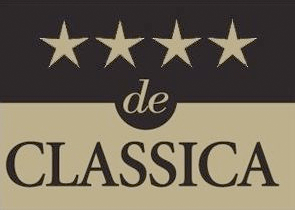
In this new recording, listen to the finesse with which the performers conduct their Beethoven phrases: infinite in line, sung in weightlessness, the Adagio holds the attention, as does the mischievous and mutinous Scherzo [...]
Fanny Mendelssohn's QAH is seductive. The Allegretto and final Allegro soar, pulse beating, with the delicacy of a sparrow, carried by the finesse of the articulations; the Adagio and Romanze move, melancholic and homogeneous, given on the points, rich with their fruity, juicy, sap-filled sonorities. Richard Dubugnon's Lettre à l'Immortelle Bien Aimée completes the program [...] Between torment and modesty, the QAH and Didier Sandre, a member of the Comédie Française, exalt the beauty of this intimate drama..
Fabienne Bouvet, Classica

The acronym QAH conceals a clarinet quartet of outstanding musicians. In their recording dedicated to Fanny Mendelssohn, they pay tribute to Beethoven (String Quartet Op.18 No.1) and their muse (String Quartet in E-flat major) in two high-flying transcriptions. In addition, Richard Dubugnon's original melodrama (premiered in 2022) - based on the Lettre à l'Immortelle Bien Aimée, which the Titan of Bonn never sent to its addressee - features Didier Sandre, a member of the Comédie Française, whose subtly measured voice adds extra soul to this highly original CD.
Michel Le Naour, Cadences
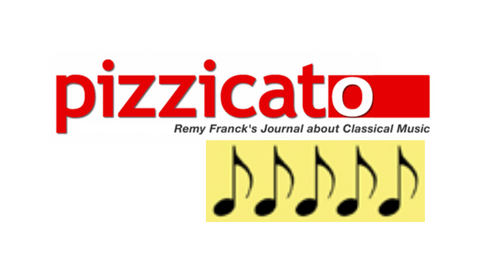
"Beethoven's String Quartet Op. 18/1 takes on a new and very special, even enriching character, thanks to the unusual sound of the four wind instruments. The first of the Op. 18 quartets lends itself particularly well to a dramatically pulsating arrangement, with new colors and unusual rhythmic patterns. [...] Finally, Fanny Mendelssohn's only string quartet, dating from 1834, is transcribed for clarinet quartet. The transcription for clarinet quartet shows even more than the original the daring novelty of this music, whose force imposes itself unforgettably on the listener in this recording with new élan."
Remy Franck, Pizzicato

"In the packed Salle du Sénéchal in Toulouse, these four accomplices, united by an invisible musical bond, impress with the maturity and refinement of their interpretations. [...] The remarkable fidelity to the original text immediately gives the impression that the score was written for these wind instruments. The Allegro con brio sparkles with a thousand lights. The dazzling virtuosity, particularly displayed by the first clarinet (I was about to write the first violin!), is accompanied by a remarkable sense of nuance and a choice of phrasing that is both elegant and varied. [...] To conclude, the Quatuor Anches Hantées plays two of the four movements of this beautiful quartet, in a transcription by Laurent Arandel. After a meditative introduction, the first movement Adagio ma non troppo illuminates the landscape with its serene eloquence. The fourth movement, Allegro molto vivace, displays a joyful volubility that the musicians deploy with dazzling vitality.
Serge Chauzy, Classic Toulouse

A lively overture from Die Fledermaus kicks off a program full of relief, thanks to the commitment of the performers but also to the naturalness and humor they bring to its presentation. Lively pieces, such as the famous Dance of the Hours from Ponchielli's Gioconda, a real delight, or, more rarely, the Entr'acte Sévillana from Massenet's Don César de Bazan, roundly conducted, are mixed with more peaceful but no less seductive pieces. With what art and what complicit breath the timbres of the four performers merge in the "Prayer to the Moon" from Rusalka, the Intermezzo from Suor Angelica or an excerpt from Goldmark's Queen of Sheba, during which Nicolas Châtelain's lyricism unfolds in the setting provided by his three partners: a moment of rare poetry in front of an audience that was ecstatic.
Alain Cochard, Concertclassic

"After chamber music, [...] the Quatuor Anches Hantées tackles the symphonic pages of the operatic repertoire. No arias, therefore, in this disc which aims to remind the importance of the orchestra in operas. [...] The challenge is risky, but it is partly won. One remains admiring in front of the flexibility and the balance of the whole, where none of the various clarinets (from the small to the bass) comes to take the top. Some arrangements bring a seductive light, like the Prelude of Act III of La Traviata, of a tender sensuality, or this sparkling extract of the too underestimated operetta Moscow, District of Cherries, by Shostakovich. [...] "
Augustin Javel, Classica

"The elegance of the Anches Hantées Quartet is marvelous in Mozart's Quartet No. 15, unfolding fluid and homogeneous ribbons. In this work inaugurating the inner exploration of the Viennese master, the interpreters choose flexibility, mirroring the mobility of feelings. [...]
Bouncing syncopations, purity of sound and variety of articulations guide the interpretation of Beethoven's Quartet op 18 n°6 [...].
Les Anches Hantées sing and dance the Huit Esquisses by Philippe Hersant, the best part of this program. Organic and radiant, the four clarinets here expand their palette of timbres, summoning the listener into an evocative and poetic imaginary folklore."
Fabienne Bouvet, Classica

"A very original formation, four clarinetists who had the idea of putting their strengths together to create a very special repertoire."
Jean-François Zygel, Zygel Academy - France 2
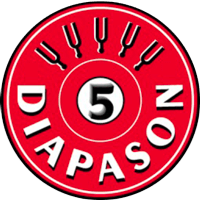
"The Anches Hantées Quartet demonstrates an extraordinary flexibility and bends to the most astonishing technical requirements, in transcriptions remarkably realized by Bertrand Hainaut, of string quartets by Mozart and Beethoven. [...] The Quartet KV 421 in D minor does not seem to be out of place in its new setting. Its character, often elegiac rather than tragic, where dark tones predominate, preserves intact the climate of interior solitude that is so characteristic of the score. [...]
Les Esquisses is one of Philippe Hersant's most welcome scores and undoubtedly the jewel of the album. [...]"
Patrick Szersnovicz, Diapason

"[...] With their sensitivity and their homogeneous and warm tones [...] similar to those of the string quartet, the four comparses prove that this classical repertoire (Mozart and Beethoven quartets, editor's note) suits them perfectly. [...] Philippe Hersant composed Huit Esquisses for them, which they premiered in 2018 under the composer's watchful ear. These miniatures invite us into a universe that is sometimes disturbing, sometimes enigmatic, sometimes sunny, exploiting their timbres and virtuosity. [...]
Nathalie Niervèze, ClassiqueMaisPasHasBeen.fr
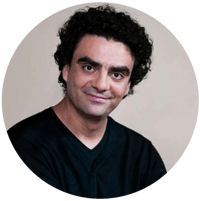
"The name of the group says a lot about the four clarinetists' sense of humor, but they also have a knack for delighting audiences at each of their concerts with programs that are as entertaining as they are lively."
Rolando Villazon, Stars von Morgen - Arte

"A certain French Wagnerism is also heard, notably in the Romance for clarinet quartet, an original formation where the Quatuor Anches Hantées shines. [...]"
Wanderer

"The two transcriptions by Bertrand Hainaut are masterful: it seems that Mozart and Beethoven conceived their works for clarinets; we fully enjoy the different sounds and possibilities of these instruments, both known and unknown. Our four clarinetists, all virtuosos, transmit the joy and the desire to play, surprise us with unexpected expressions, seduce us with their permanent mutual dialogue. Such a beautiful CD will do honor to one's record library."
Victoria Tomoko Okada , TouteLaCulture.com

"[...] the Festival (Besançon International Music Festival, editor's note) did not forget the opera lovers, who found their happiness at the Granvelle courtyard with Les Anches Hantées, a unique quartet of clarinettists, who interpreted a resplendent program around great opera arias from Mozart to Offenbach and Puccini, but without diva. [...]"
Jean-François Schiby, L'Est Républicain
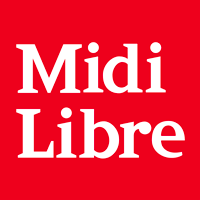
"...] the four clarinets of Les Anches Hantées draw from the operatic repertoire. La Traviata blends emotion and depth of mood, and the Intermezzo from Puccini's Suor Angelica, with its suspended arpeggios, is just as captivating. If the famous Bacchanal from Samson et Dalila by Saint-Saëns allows us to savor the virtuosity of the sopranos, the dialogues with the bass and the astonishing basset horn, we also discover with pleasure The Queen of Sheba by Goldmark. Khatchaturian's rousing Galop concludes with humor and glee."
Michèle Fizaine, Midi-Libre
Biography
Becoming the QAH was a true quest ; starting from scratch in 2001, with no repertoire, no sponsor, no clarinet quartet as a reference, but with the spirit of a brass band and camaraderie, akin to a sports team preparing for a shared adventure, the QAH climbed the steps one by one to become the unique quartet it is today.
From the village halls and churches of its beginnings to the Salle Cortot, Salle Gaveau, Montpellier Opera, Tours, Arsenal de Metz, Maison de la Radio, and TV experiences on Arte and France 2, the QAH has accomplished phenomenal work. A career that began 22 years ago but took on a new dimension in 2019, particularly by collaboration with Pierre Colombet from the Quatuor Ebène, working alongside him and receiving recognition from a segment of the musical world that had not yet discovered its full talent.
In its vibrant third decade, the Quatuor Anches Hantées has managed to establish itself as a true bridge between rigor, tradition, innovation and modernity. It now combines youth, experience, and artistic maturity.
Fanny M, created and recorded in the autumn of 2022, will now coexist alongside Strauss&Co, which will also come to life this season (featuring classical, contemprorary and hip-hop dancers). The QAH’s success lies in finding the balance between dense programs (often intended for knowledgeable music enthusiasts) and more open and eclectic forms (for the general public). It extends a hand to all audiences, bringing them together to create the audience of tomorrow.
The QAH has turned a page and hesitates no more to borrow from the repertoire. The QAH’s repertoire belongs to them; it is a lever, a tool for self-expression.
23/24 will continue to be open to all audiences, with an ever-stronger commitment to inclusion. Nevertheless, this season will mark the beginning of a new era with these two new programs, and the foundations of an exciting new creation to come, based on The Nutcracker.